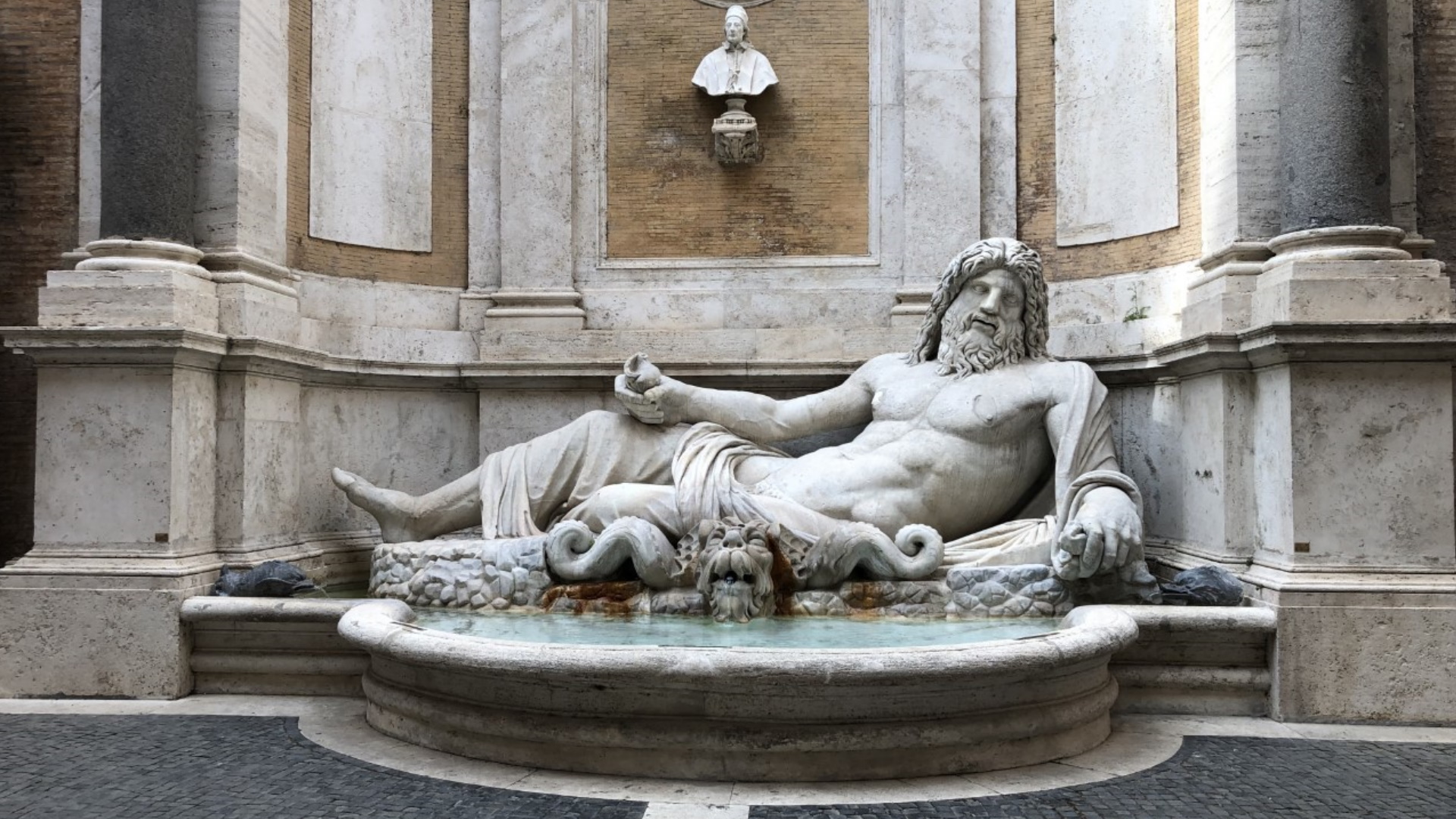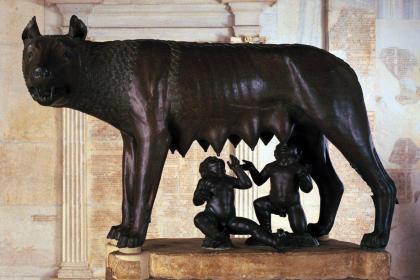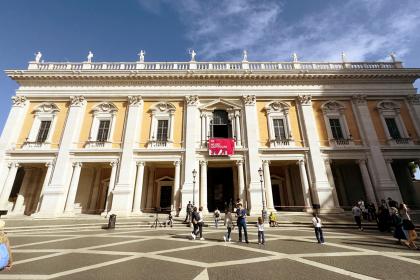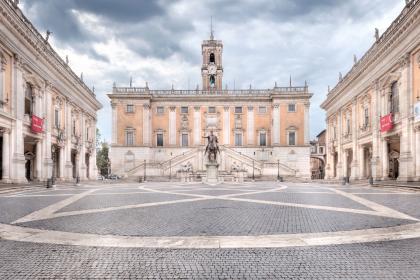
The marble sculpture is located in the courtyard of the Palazzo Nuovo - seat, together with the Palazzo dei Conservatori of the Capitoline Museums - leaning against a wall bordering the basilica of Santa Maria in Aracoeli. Dated to the 1st century AD, the huge sculpture represents a reclining male deity with a long beard; a cloak covers her shoulder, left arm and legs. In his left hand, added later, he holds a shell. Below the figure there is a sea monster, from whose mouth water falls into the pool in front of it gushes. The statue is interpreted as the personification of Ocean or a river, perhaps the Nera. The work was found in the Forum of Augustus, near the Temple of Mars Ultor, in the sixteenth century, in the area known as the Forum of Mars or Martis Forum in the Middle Ages: the origin of the name Marforio comes from the deformation of the Latin word; or, according to another hypothesis, the name would instead be attributed to the Marfoli or Marfuoli family, who owned properties near the Mamertine Prison, in the area where the statue was found.
In 1588 it was moved to Piazza S. Marco at the behest of Pope Sixtus V but, shortly after, it was moved to the Capitoline Hill, to be placed in a fountain designed by Giacomo Della Porta in 1594, which was to close the square on the side facing the church. of the Ara Coeli; the huge head of Constantine was also placed in the fountain, now in the courtyard of the Palazzo dei Conservatori, and the large bronze sphere of the Vatican obelisk. With the construction of the Palazzo Nuovo by Innocenzo X in 1644-1655, Della Porta's fountain was dismantled and placed in the courtyard of the new building. In 1734 a new fountain was designed with the statue of Marforio, designed by Filippo Barigioni, placed on the back wall of the courtyard of the Palazzo Nuovo, on which there is also a commemorative plaque and a bust of Pope Clement XII.
The Capitoline museums

 Condividi
Condividi
Palazzo Nuovo

 Condividi
Condividi
Piazza del Campidoglio (The Capitoline Hill)

 Condividi
Condividi
Information
 Condividi
Condividi
Location
To find out about all accessibility services, visit the Rome accessible section.











































